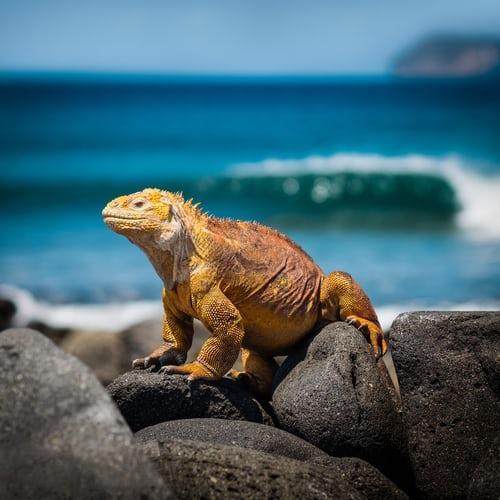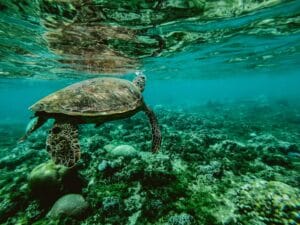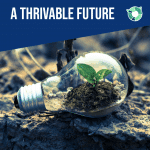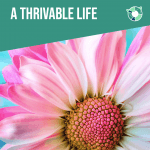All life is dependent on natural resources. Clean water, breathable air, stable soil, and food production are just some of the many ecosystem services provided by nature that are essential to the survival of life on Earth. The conservation of these natural resources must become ingrained into everyday thinking to preserve the planet for future generations. Despite their significance, natural resources are continuously overused and underappreciated.

Source: Town and Country Magazine
Diversity
Nature’s bounty is endless and varied. There exists a multitude of animal and plant species, soil types, ecosystems, and trillions of insect species alone. Hundreds of years of cataloguing every species discovery has barely scratched the surface of the abundance of life that exists. Human creations simply cannot compare.
Every organism is essential for maintaining the cycle of life and protecting nature from destruction. Every species has its niche role in the environment, the health of the planet, and humanity’s ability to thrive on Earth. Nature provides many of the fundamental requirements necessary for human survival, such as food security, oxygen production, pollination, predator and pest control, and even medicine.
Developing Nations
As the global human population increases, a concurrent decline in biodiversity and ecosystem services is occurring planet-wide. This matter is more pronounced in developing countries than in developed nations. Unfortunately, developing countries often experience high levels of political corruption and violence, which may limit the success of conservation projects by reducing effective funding levels and distorting priorities. Governments face many issues and often seek the help of aid agencies to tackle problems related to biodiversity conservation. The international community (led by the IUCN) monitors the welfare of biodiversity in each country to ensure that biodiversity does not drastically decrease.

Source: Unsplash.com
The IUCN
The International Union of Conservation of Nature (IUCN) categorises the world’s flora and fauna according to populations in the wild, geographic range, and vulnerability to extinction. The flora and fauna found on the red list are the most threatened and need the most protection. These species are then categorised based on their level of extinction potential. The red list categories define the extinction risk of species as assessed by the IUCN. The species most threatened by extinction are categorised as Critically Endangered (CR), Endangered (EN), and Vulnerable (VU).
Classifying Species
There is an increasing number of species that are becoming Critically Endangered every year. This is primarily a result of human impact and human-induced climate change. Furthermore, species that are data deficient are listed to determine where future research should be directed to assess their conservation status. A species endemic to one country or region and those with a narrow geographic range are listed as threatened more often than those found over a larger area.
Nature including humans
Efforts to protect the threatened and vulnerable species across ecosystems are underway around the world. Biodiversity and conservation have been centrepieces of environmental politics and policy over the last several decades owing to public pressure. In Australia, the creation of “Nature Positive Reforms” by the Albanese government is targeting better environmental information and transparency while aiming to create better environmental standards. Increasing the inclusion of traditional owner groups who have cared for the land for thousands of years allows for the determination of best practices and enables effective environmental planning and management.
Transnational agencies, international NGOs and economists claim that biodiversity can be preserved by adopting the idea of natural capital as natural wealth. This means increasing the visibility and the perceived economic value of nature by putting a value on natural assets and highlighting the cost of plundering them. This thinking, hopefully, encourages humanity to step up and protect the natural wealth of the environment and its inhabitants. Such thought processes must be adopted promptly, as natural resources must be protected from destruction in the immediate future to prevent irreversible declines.

Source: iStock
Madagascar
Using this model of natural capital, scientists have conducted studies on Madagascar, an African island nation located in the Indian Ocean. It is one of the most underdeveloped nations on Earth, with a daily average income of just US$3.10 a day. In Madagascar, conservation and development intricately intertwine. The majority of the population lives in rural areas and is directly dependent on natural resources. This means that the island’s landscapes are continuously altered so that the population can meet their basic, daily needs. Many conservation and development issues have required policy adjustments in Madagascar. Evidentially, the formulation of policies to promote conservation and development goals and the identification of strategies and actions need to include and involve these key actors.

Source: Constructive Voices.
International Agencies
While Madagascar is an example of where policies have not yet been effective, there are several countries where international agents, such as the IUCN, have intervened to save biodiversity. Zambia and Belize are examples of countries where biodiversity is improving with the help of government initiatives. International agencies, including the IUCN, World Bank, United Nations Development Program (UNDP), Organisation for Economic Co-operation and Development (OECD), and the Food and Agricultural Organisation (FAO), work to reduce impacts on nature and improve the future environmental outlook.
why focus on the Conservation of Natural Resources?
The global focus must be on safeguarding conservation efforts within each country and ensuring conservation efforts continue to grow and succeed. Conservation is essential for the provision of natural services. The loss of these natural services would inhibit the functioning of the planet by reducing air quality, decreasing soil fertility, and creating less favourable climatic conditions. For example, a lack of pollinators, such as bats, would eventually result in a loss of forest and, therefore, oxygen production.
How the United Nations Sustainable Development Goals link to the Conservation of Natural Resources
By working towards achieving the United Nations’ Sustainable Development Goals (SDGs), the planet will be on a path to sustainability. SDG13 is most applicable here (Climate Action), alongside SDG14 and SDG15 (Life Below Water and Life on Land). SDG12 (Responsible Production and Consumption, SDG7 (Affordable and Clean Energy), and SDG6 (Clean Water and Sanitation) also apply. With work toward the accomplishment of these goals, natural resources will fare much better.
Moving forward
Worldwide, international agencies are actively trying to protect the environment and its biodiversity from destruction and also help rural populations attain environmental protection. Individually, small efforts such as backyard rewilding or community projects by organisations such as Landcare, are helping locally. However, more initiative is essential from both local and federal governments to protect nature.
It is far easier, particularly in Australia, to use the law to destroy nature rather than protect it. Large-scale rehabilitation projects currently take months or even years to attain approval. In contrast, logging permits can take as little as three days. This discrepancy must be rectified through improved policies and better regulatory processes to ensure future viability. Nature should not be something we take for granted or remember in history books.
There is a correlation between education levels and environmental degradation. Local governments encourage rural participation in environmental strategies through workshops and education sessions. Educating rural populations about the depletion of groundwater and rising pollution levels that lead to climate change is continuing. Such measures save the existing biodiversity from further destruction. Implementing stringent measures and programs will help maintain the sustainability of the environment and prevent the loss of biodiversity. This will be the start of achieving a thrivable future.
A Thrivable Framework
THRIVE Project’s (The Holistic Regenerative Innovative Value Entity) Foundational Focus Factors (FFFs) are means by which we can measure the sustainability of our actions. These are fundamental factors in the conservation of nature and go beyond sustainability into thrivability, where the needs of nature are not simply met but exceeded. Thrivability should be the goal of the planet so we are not just simply surviving, but thriving. Achieving thrivability through the habitual conservation of natural resources will require Integral Thinking and Science-Based Metrics. Conserving our Finite Resources and achieving Strong Sustainability should be a priority for the planet. Go to the THRIVE Project website and YouTube channel, check out the publications, attend the monthly webinar, or read the newsletter to find out more and to see how you can help work toward a thrivable future.




















